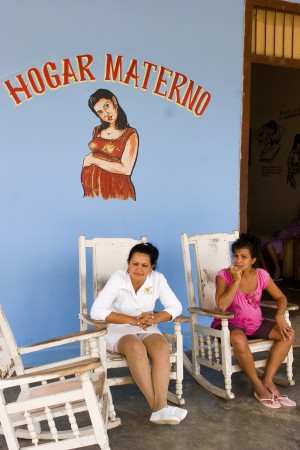Say what you want about Fidel’s failed political experiment (and I’ve said plenty myself), but he did keep his promise to provide health care for everyone. But while it’s not difficult to see a doctor here, the problem is that the country has no drugs (and no money to buy any), so while your disease might be quickly diagnosed, there might be little Cuban doctors can do about it.
One of its biggest health care successes, however, is its emphasis on maternal and infant health. Back in the grim days under Fulgencio Batista, the infant mortality rate was 91 per 1,000 live births; fifty years later it stands at about 6.4 per 1,000 births. That’s pretty astonishing for such an impoverished nation. (By comparison, according to the U.S. government, the infant mortality rate in our own country stands at about 6.3 per 1,000 live births).
I mention this because as I was walking around Viñales after lunch, I passed the Hogar Materno, a four-bedroom, 15-bed maternity home where a very pregnant young woman and a nurse were sitting in rocking chairs on the front porch.
I stopped and chatted with them for a few minutes. According to the nurse, whose name I think was Noemi, there are approximately 210 maternity homes like this one in Cuba—one for every municipality.
And who comes here, I asked her, all the pregnant women in town?
No, no, no, she told me. Mostly women who are malnourished, as well pregnant moms who have high-risk factors like diabetes or anemia. Or like this one, she said, nodding to the woman in the pink top sitting next to her, who are “teniendo gemelos”—having twins.
The pregnant mom patted her belly with two hands and rolled her eyes. “Era flaco,” she said.
“You’re still very skinny,” I lied.
I asked her what was the best part about living at the maternity home.
“La comida,” she said. The nurse laughed.
Before leaving, I asked for their permission to take a photo. And then the expecting mom got up and waddled inside to have her midday meal.


Recent Comments